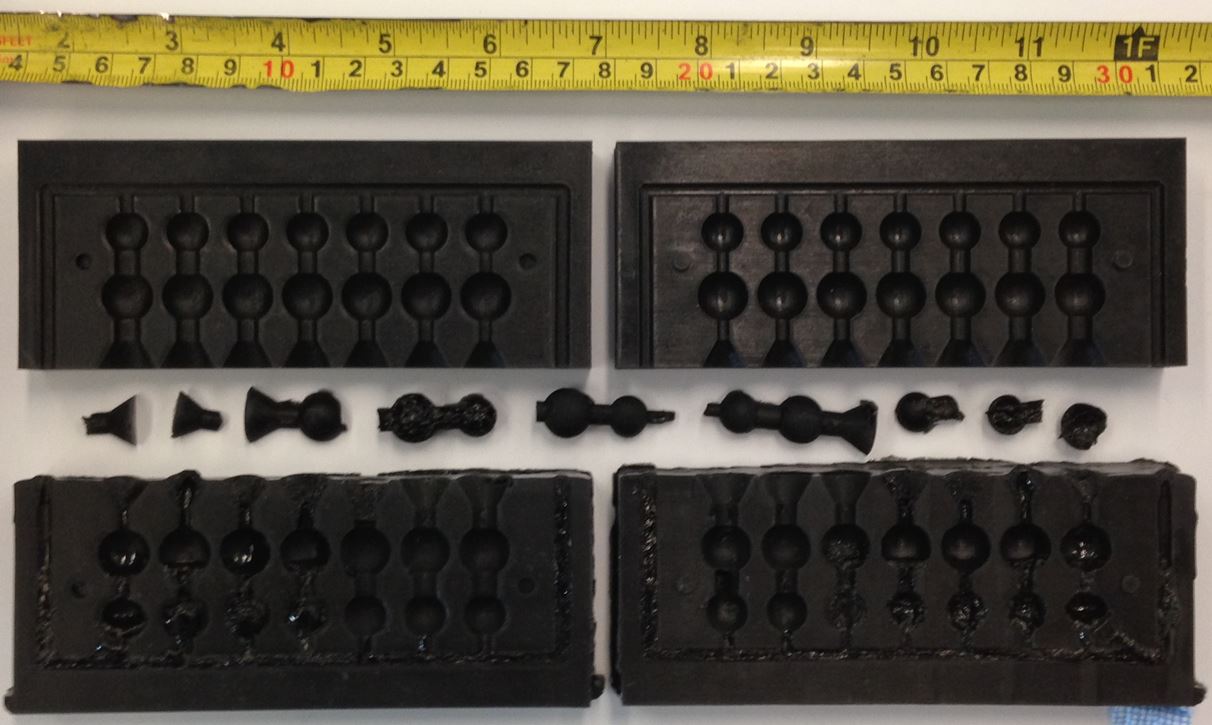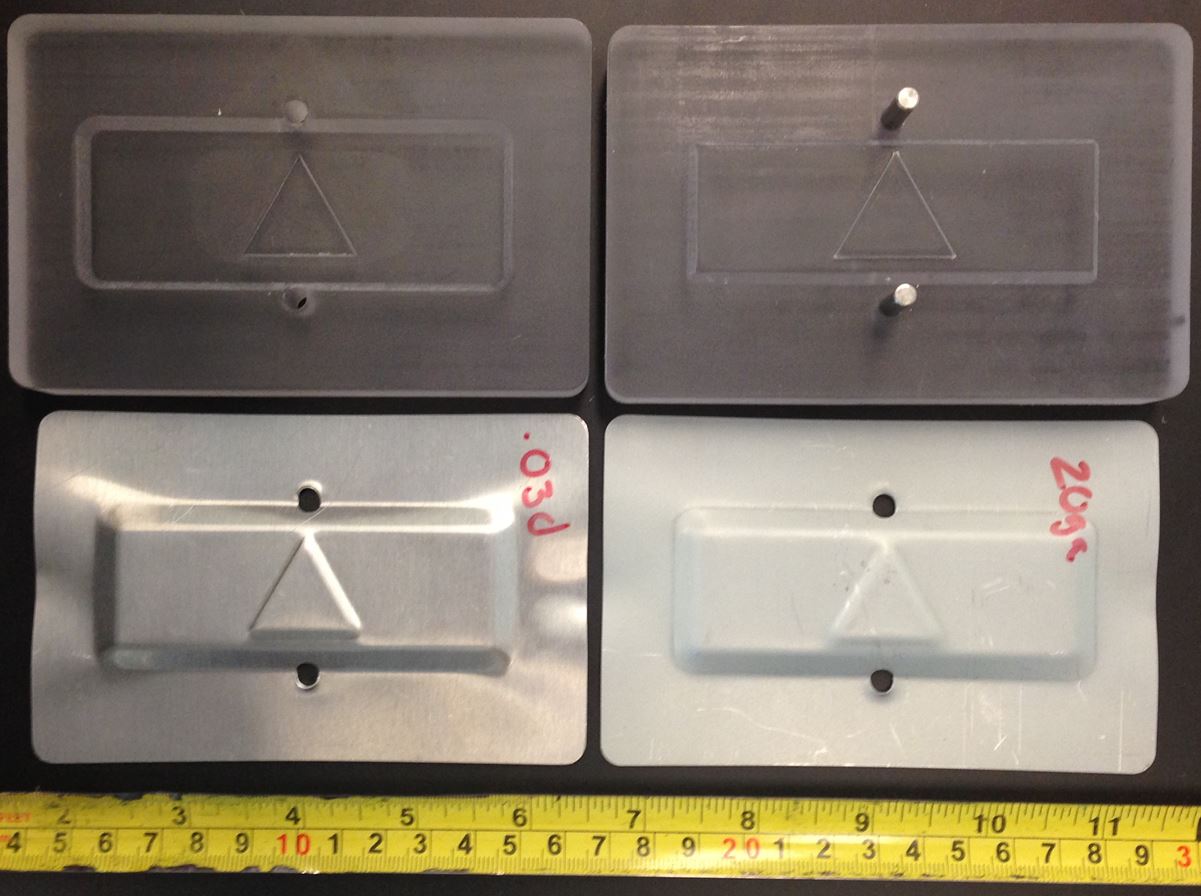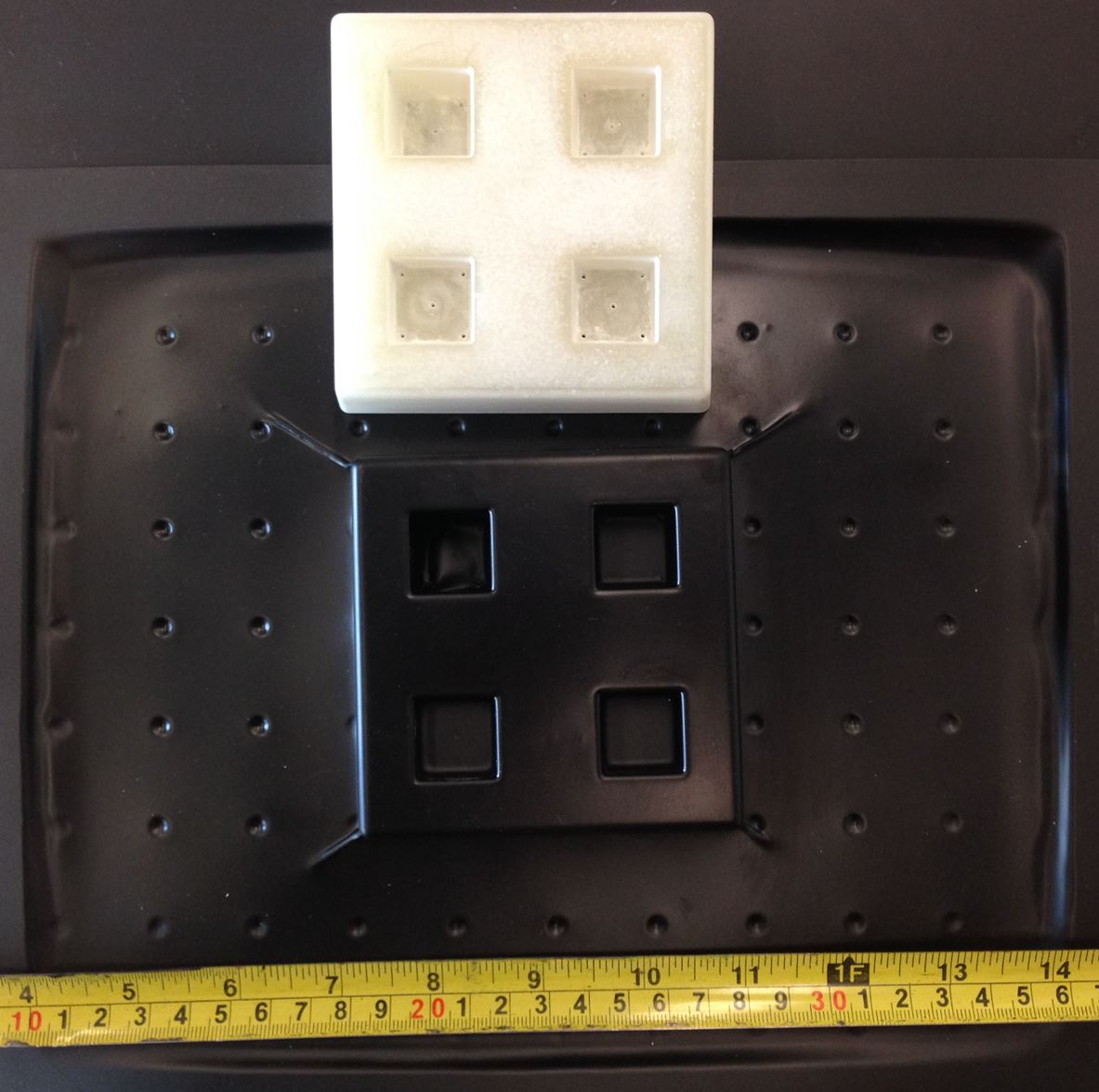Project Objective
Develop testing procedures and evaluation metrics that culminate into design guidelines for the use of 3D printed molds in vacuum forming, sheet metal forming, and direct printing of soft tooling that will enable clients to predict the quality of finished tooling and wear on tooling by June 8th, 2018 with an individual request budget approved by 3D Systems (3DS).
Team
The 3DS Capstone team is:
- Anthony Webb
- Justin Sunnarborg
- James Pauliny
- Jody Holton
- Joseph Hernandez
- Larion Bodunov
Customer/Market Requirements
The project sponsor requires a set of design metrics detailing design rules and feature limitations for 3D printed tooling used for sheet metal pressing, soft tooling, and vacuum forming. The sponsor will also be provided with the 3D printed parts used to define the provided metrics.
Design Challenges
The primary challenge for the team is designing robust 3D models that progress from simple tooling geometry to more complex geometry that combines multiple key features. Initial 3D models have been designed with single key feature variables such as draft angle, draw depth, and text size. One more specific challenge is successfully removing casts from the soft tooling molds.
Outcomes
At this time the results collected from evaluating tooling results are being used to design more complex 3D models. Different liquid plastics are being explored to see if they are more easily removed from the soft tooling molds. The initially tested mold had a long cure time and, as a result, may have bonded too well to the flexible plastic mold.


